Intel 11th Generation Core Tiger Lake-H Performance Review: Fast and Power Hungry
by Brett Howse & Andrei Frumusanu on May 17, 2021 9:00 AM EST- Posted in
- CPUs
- Intel
- 10nm
- Willow Cove
- SuperFin
- 11th Gen
- Tiger Lake-H
CPU Tests: Legacy and Web
In order to gather data to compare with older benchmarks, we are still keeping a number of tests under our ‘legacy’ section. This includes all the former major versions of CineBench (R15, R11.5, R10) as well as x264 HD 3.0 and the first very naïve version of 3DPM v2.1. We won’t be transferring the data over from the old testing into Bench, otherwise it would be populated with 200 CPUs with only one data point, so it will fill up as we test more CPUs like the others.
The other section here is our web tests.
Web Tests: Kraken, Octane, and Speedometer
Benchmarking using web tools is always a bit difficult. Browsers change almost daily, and the way the web is used changes even quicker. While there is some scope for advanced computational based benchmarks, most users care about responsiveness, which requires a strong back-end to work quickly to provide on the front-end. The benchmarks we chose for our web tests are essentially industry standards – at least once upon a time.
It should be noted that for each test, the browser is closed and re-opened a new with a fresh cache. We use a fixed Chromium version for our tests with the update capabilities removed to ensure consistency.
Mozilla Kraken 1.1
Kraken is a 2010 benchmark from Mozilla and does a series of JavaScript tests. These tests are a little more involved than previous tests, looking at artificial intelligence, audio manipulation, image manipulation, json parsing, and cryptographic functions. The benchmark starts with an initial download of data for the audio and imaging, and then runs through 10 times giving a timed result.
We loop through the 10-run test four times (so that’s a total of 40 runs), and average the four end-results. The result is given as time to complete the test, and we’re reaching a slow asymptotic limit with regards the highest IPC processors.
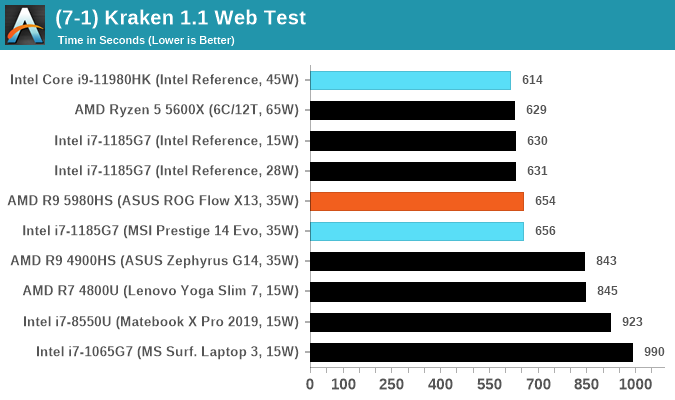
Google Octane 2.0
Our second test is also JavaScript based, but uses a lot more variation of newer JS techniques, such as object-oriented programming, kernel simulation, object creation/destruction, garbage collection, array manipulations, compiler latency and code execution.
Octane was developed after the discontinuation of other tests, with the goal of being more web-like than previous tests. It has been a popular benchmark, making it an obvious target for optimizations in the JavaScript engines. Ultimately it was retired in early 2017 due to this, although it is still widely used as a tool to determine general CPU performance in a number of web tasks.
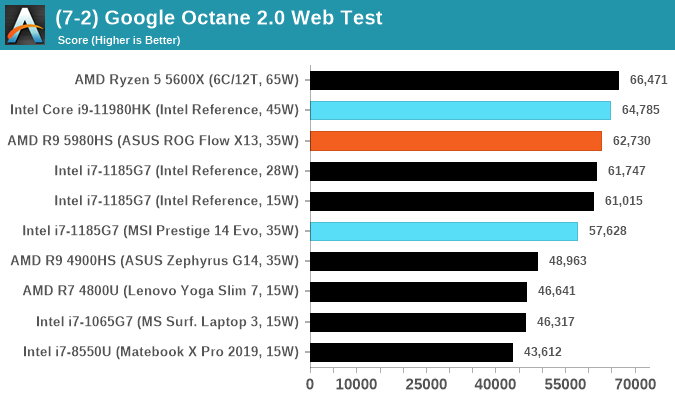
Speedometer 2: JavaScript Frameworks
Our newest web test is Speedometer 2, which is a test over a series of JavaScript frameworks to do three simple things: built a list, enable each item in the list, and remove the list. All the frameworks implement the same visual cues, but obviously apply them from different coding angles.
Our test goes through the list of frameworks, and produces a final score indicative of ‘rpm’, one of the benchmarks internal metrics.
We repeat over the benchmark for a dozen loops, taking the average of the last five.
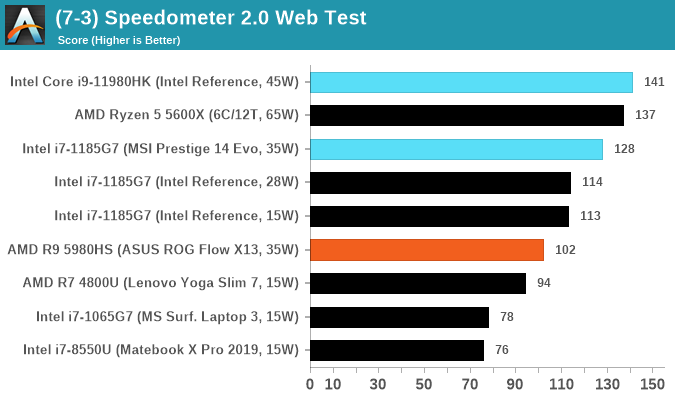
Legacy Tests

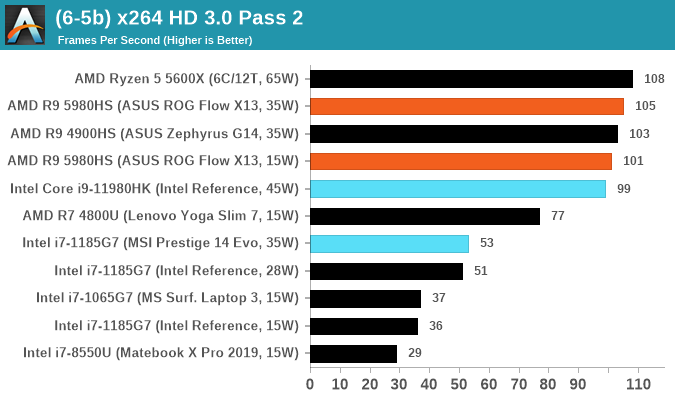
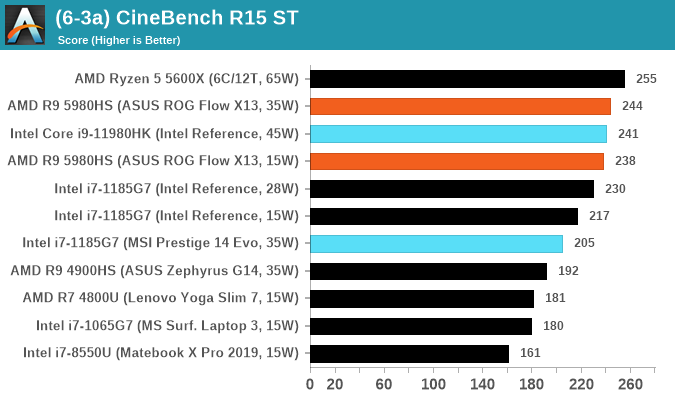
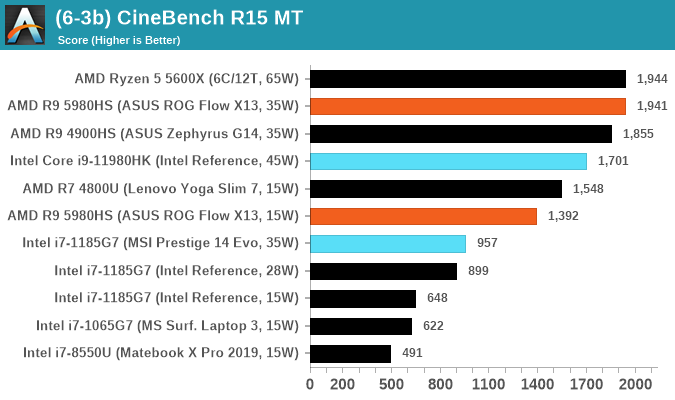


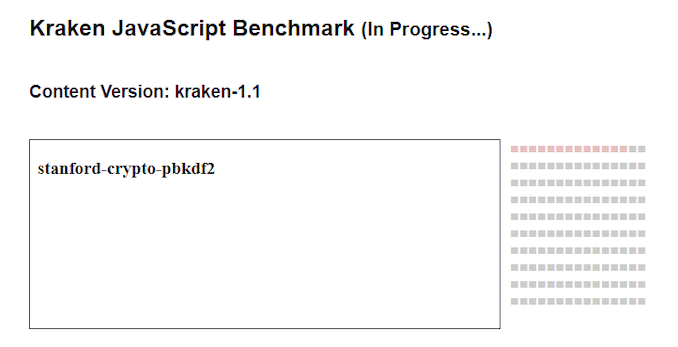
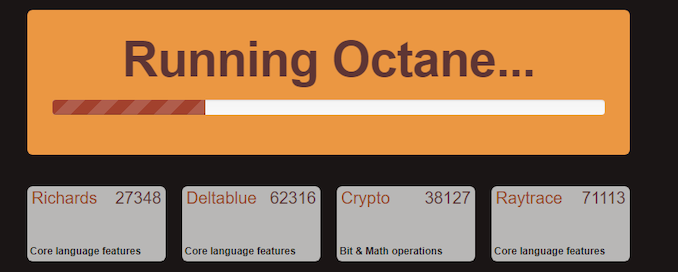









229 Comments
View All Comments
Alistair - Monday, May 17, 2021 - link
no, that's not right, Tiger Lake is mainly clock speed improvements, not IPC, running Tiger Lake or Comet Lake in a desktop at the same 4.8GHZ all core would get you almost exactly the same performanceheickelrrx - Monday, May 17, 2021 - link
are u drunk?laduran - Tuesday, May 18, 2021 - link
Nomode_13h - Tuesday, May 18, 2021 - link
> Tiger Lake is mainly clock speed improvements, not IPC, running Tiger Lake or Comet Lake> in a desktop at the same 4.8GHZ all core would get you almost exactly the same performance
You're confusing Comet Lake with Ice Lake. IPC of Tiger Lake isn't much improved above that of Ice Lake.
Qasar - Wednesday, May 19, 2021 - link
can you blame him ? its time intel started using different names for their cpus.mode_13h - Thursday, May 20, 2021 - link
I didn't mean that in a pointed way. If anything, I thought it would partially validate the statement.And yes, I wish Intel would've left the Lakes behind with 14 nm, but I guess there are just too many "lake" names for them to part with it for the mere sake of naming consistency. More annoyingly, they're even using "lake" names for some things that aren't CPUs.
Qasar - Thursday, May 20, 2021 - link
it seems they are staying with lake and cove names so unless you are using a slide ruler and a decoder ring, you have no idea which cpu is what :-) i gave up trying to keep track of their names are which cpu line a while ago.mode_13h - Friday, May 21, 2021 - link
> it seems they are staying with lake and cove namesSapphire Rapids is the next server CPU. Also, the little cores seem to be Monts, while the big cores are Coves.
I think the biggest groaner is "Lakefield", which is that mobile CPU with one big core, 4 little cores, and a chunk of eDRAM. MS used it in a Surface model.
Qasar - Friday, May 21, 2021 - link
mode_13h, still doesnt change the fact that the names intel gives its cpus, are confusing has he double hockey sticks :-)mode_13h - Sunday, May 23, 2021 - link
Oh, for sure. It was so nice when *Bridge = LGA 1155, *Well = LGA 1150, and *Lake = LGA 1151....then, it seemed like nearly everything became a Lake!